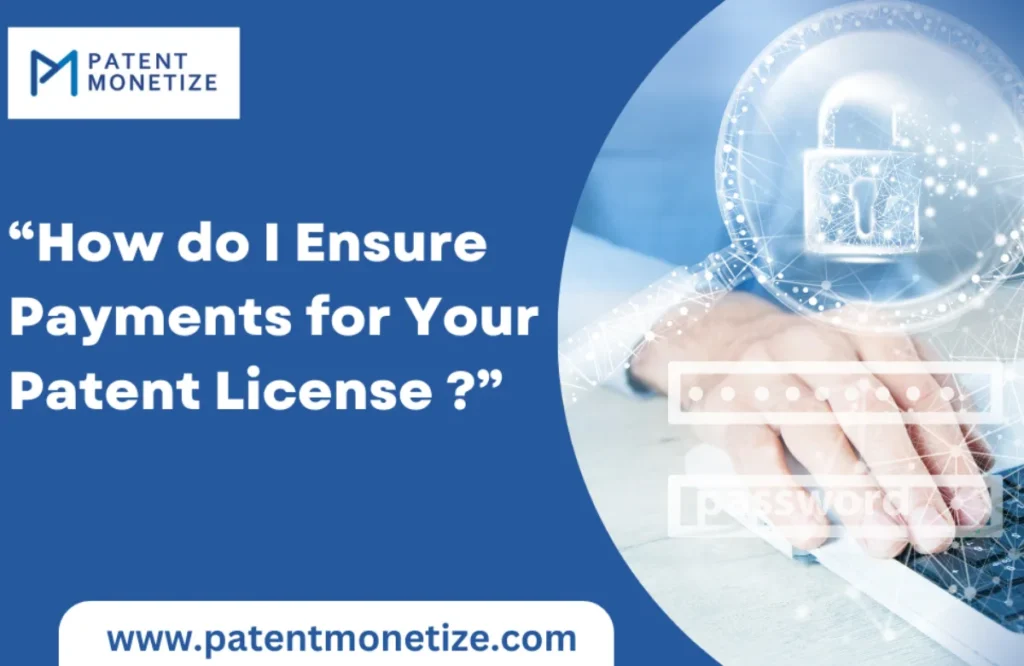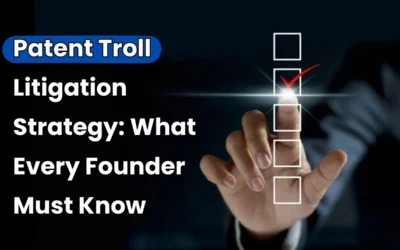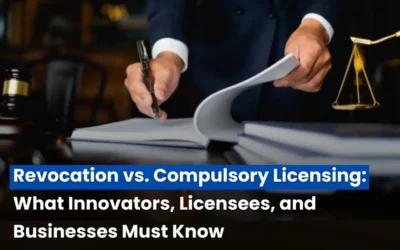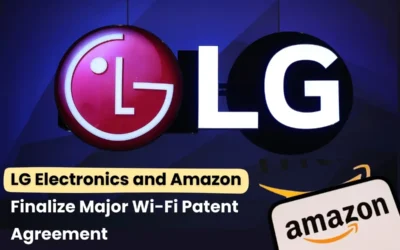
Licensing your patents to companies all around the world is a very lucrative source of income for your intellectual property rights (IPR). However, getting timely, guaranteed payments on these international licenses is complicated. While licensing opens up the opportunity for continued financial returns through royalty payments, making sure those payments are consistently made in full requires careful planning, legal safeguards, and diligent management of your patent license agreements. We will discuss, in this article, ways of effectively taking care of payments for your global patent licenses – strategies, best practices, and legal measures that the holder of the patent can take to protect themselves and ensure their licensing arrangement ends in success.
The Significance of a Proper Patent Licensing Agreement
Patent license agreement is the granting of rights to another firm to use the intellectual property in your patents. This is a good way to make money on the patents without having to sell the patents outright, but such an agreement would be required to set clear terms and safeguards to ensure payment is made and protect your rights. Most well-drafted patent licensing agreements can mitigate the risk of non-payment, disputes, and breach of contract. Despite perfect agreements, there is the possibility that problems may arise if the correct measures are not carried out in the agreement. Since conditions should be known that lead to effective patent license payments and the correct mechanisms involved, there will eventually be long-term financial gains.
Step 1: Establish clear terms of payment in a Patent licensing agreement
The basis for guaranteeing regular payments would be the development of a detailed patent licensing agreement that contains clear, explicit payment terms. This includes the following:
- Royalty Rates: What percentage or fixed amount the licensee should pay for using your patent. The royalty may be a one-time payment, an ongoing periodic payment, or a combination of both, depending on the nature of the agreement.
- Frequency of payment: Decide how often payments will be made (every quarter, annually, or at specific milestones). Specify the specific date for each payment and also state the method to effect payment (bank transfer, cheque, through online platforms, etc.).
- Minimum Payments: Add minimum payment clauses to ensure the licensee pays on time, even if the sales or usage of the patented technology is not as high as expected. That way, you are guaranteed some income irrespective of the poor business of the licensee.
- Advance Payments: Sometimes, you can ask for advance payments, which will give you immediate revenue and reduce the risk of delayed or missed payments. You may negotiate for advance payments or signing bonuses to secure your financial interests.
- Milestone Payments: For long-term projects or product development tied to the use of your patent, consider setting milestone payments. These payments are linked to specific achievements, such as the completion of a product prototype, a certain number of units sold, or the commercialization of the patented technology.
- Late Fees and Penalties: Levy upon late payment penalties to make the licensee pay on time. Specify the rate of interest or late charge that will be levied in case the licensee is not able to pay on time.
- Audit and Reporting Rights: Include provisions that give you the right to audit the licensee’s books and records. This is very important in ensuring that the royalty calculation is transparent. Determine the frequency and procedures for conducting audits so that they are fair and unbiased.
Read Also: New AI Patent Licensing Body Starts $100 Million Enforcement Drive
Step 2: Use Payment Escrow Accounts
An escrow account is a good strategy to ensure safe payment. In an escrow agreement, there has to be a third party that will hold the royalty payments; in this case, the escrow agent. The agent releases funds to the patent holder after the terms are confirmed, once the licensee fulfills the obligations in the agreement.
- Benefits of an escrow account: Security for Both Parties: An escrow account has the protection of both the patent holder and licensee. The money will be available to the patent holder to deliver their rights upon having secured them, and the licensee will get their agreed-upon rights upon the completion of the payment.
- Escrow Account and Avoidance of Payment Disputes: It is possible to minimize disputes on payment terms or amounts with an escrow account since it creates a neutral platform and ensures funds are handled fairly.
- Release of Funds in Time: With well-defined conditions for payment, the escrow agent will release funds as soon as all terms are met, ensuring you receive payments on time.
Step 3: Protect Your License Agreement under Legal Security
Protecting one’s legal safeguards is the most significant step to ensure that your global patent licenses get paid up as agreed. A solid legal framework will prevent breaches of contract and non-payment issues from surfacing.
- Jurisdiction and Venue. Jurisdiction and venue for dispute resolution should be agreed on during negotiation of the international patent license agreement. It should be such that disputes on matters like payment terms and enforcement would fall within a system most favorable to you.
- Governing Law: This is the provision of the governing law that stipulates whose laws will apply in the interpretation and enforcement of the licensing agreement. It is easier to pursue a lawsuit when payments are defaulted or in the event of a dispute, particularly if there is a favorable governing law.
- Dispute Resolution: These clauses include different ways of resolving the dispute, whether it be a mediation or an arbitration, thus avoiding the costly litigation and the wasted time that is spent before the courts. Arbitration takes less time compared to court trials, especially in international agreements.
- Indemnity Clauses indemnify you when the licensed user’s conduct causes legal complaints and litigation. Therefore, if the user fails in either payment commitments or infringing copyrights, in whatever form such commitment is, there is also some form of clause that shall bring him up short for accountability due to incurred loss.
- Termination Clauses: The definition of a termination clause is under which the licensing agreement can be terminated. Conditions that can cause termination under this license agreement include failure to pay royalties punctually, failure to adhere to the stipulated performance targets, and breach of contract. Termination clauses give protection in case the licensee fails to live up to their obligations.
- Enforcement Provisions: In case the licensee fails to make the payments, detail the remedies available to you. This could be a court order freezing their assets or forcing them to pay court-ordered damages for breach of contract.
Read Also: Best Ways to Sell a Patent: How to Get Maximum Value for Your Invention
Step 4: Monitoring Payment Compliance and Enforcing the Agreement
There is always a need for strong vigilance and management of the payments to ensure they are consistent. How can you monitor compliance and enforce the terms of your licensing agreement, proactively follow through:
- Regular Communication with Licensees: Keep in touch with your licensees and check whether they are aware of their obligation to make payments. Periodic reminders regarding upcoming payments will avoid delays.
- Use of digital tools and software: You can track payments through digital tools and manage your licensing agreement. Many software applications automatically remind you of upcoming payments and provide reporting capabilities and payment tracking features that help track your licensing revenue.
- Periodic Audits: You should be conducting periodic audits to ensure your licensees are reporting accurately and paying the proper amount of royalties. Include in the contract the right to perform periodic audits by you or a third-party auditor.
- Review Sales and Performance Reports. Regularly review the sales or performance reports given by the licensee. This will give you insight into whether they are reporting royalty payments accurately and adhering to the terms of the agreement.
- Act on Non-Payment: If a licensee fails to pay or is in breach of the terms of the agreement, act immediately. Begin by sending a formal notice of non-compliance, then a demand for payment. If the situation does not improve, consider enforcing legal remedies, such as arbitration or litigation.
Step 5: Consider Insurance for Royalty Payments
In case the regions or markets you are licensing your patents in have uncertain payments or high financial risk, you might want to take a look at patent royalty insurance. Patent royalty insurance ensures that if the licensee defaults or faces financial difficulties, you get paid. This insurance policy may cover missed payments, bankruptcies, and financial instability of the licensee. It will cost a little more, but patent royalty insurance gives comfort in high-risk markets or financially unstable licensees.
Conclusion
Ensuring you get paid for your global patent license agreement is one of the major ways to guarantee consistent revenue generation from your intellectual property. It is possible to minimize the risks of non-payment and ensure fair compensation for patents by setting payment terms in the licensing agreements to be clear and detailed, incorporating legal safeguards through escrow accounts, and following up on compliance. Planning, negotiating, and managing your agreements will be the keys to successful global patent licensing. With proper protections and processes, you will protect your revenue streams and maximize financial returns from your intellectual property.
Read Also: What Are Utility Models and How to Monetize Them Effectively









